#Black Elderberry
Text



sambucus nigra..
195 notes
·
View notes
Text
Black Elderberry. [French Folks Traditions]
In the 19th century, the peasants of France still attributed magical properties to the Elderberry, and its wood was sometimes used to make sorcerer's staffs and divinatory wands.
In the legend, Judas, after having betrayed Christ, would have gone to hang himself from an Elderberry branch. Thus, it is said in Vienne, that the person who breaks an elderberry branch in the garden of his neighbors will betray this one in the year, even without wanting it and without knowing it.
It should also be noted that in certain regions, Elderberry served as a panacea : everything was good in Elderberry for healing, in the past. But that following the curse linked to Judas, its powers had been supposedly removed.

Protective Magic :
Côtes d'Armor : Elderberries are planted near houses to ward off evil spells and snakes. It is also used to protect livestock (diseases and evil spells) by placing a branch in the cows' litter.
Yonne : Pick up a branch of Elderberry on the passage of the Corpus-Christi procession and then place it in an apple tree, it'll protect it against caterpillars. (?!)
Lower Brittany, Côtes d'Armor : You should never hit a cow with an Elderberry branch, it will make it sick, or cause its milk to dry up. Same thing for pigs.
Moreover, if you burn Elderberry wood, you risk preventing the hens from laying eggs.

Magical Medicine:
Côte d'Armor : It is said that the Dlderberry is a "doctor", because the fairies took refuge in the flowers to flee the world when it became too mean. (a special one for my dear @lailoken )
Vienne, Vaucluse : the patient who touches an Elderberry will get better in the next few days, and to cure fevers you have to slip his name and date of birth into a previously hollowed-out elderberry tree.
The feast of Saint John is (of course) favorable to the Elderberry, whose virtues it multiplies.
In the Gospel of the Cattails it is said that warts are cured by rubbing it with an Elder leaf on the eve of Saint John, a leaf which is then buried. As the leaf rots, the wart dries out.
In Upper Brittany, Elderflowers collected on Saint John's Day are used to make an herbal tea to treat sick eyes.
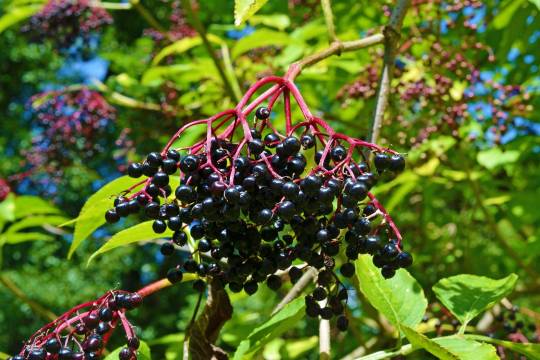
Witchcraft :
Jura : We know the story of a sorcerer who introduced a little excrement from the person or animal he wanted to bewitch into a hollowed-out elderberry stick. He then fixed this stick in running water while reciting a prayer. The victim had stomach aches as long as the water agitated the stick.
In addition, Collin de Plancy in his Dictionnaire Infernal reports that : "when one has received some curse from a sorcerer whom one does not know, one hangs one's habit from one ankle and strikes on it with an elderberry stick; all the blows will fall on the back of the guilty sorcerer, who will be forced to come, in all haste, to remove the spell."
I learned SO MUCH HERE (snakes / little neighbors / sick eyes) while I came confident and persuaded to find other things in these quotes... Thus I'll continue to thank and pay tribute by posting the work of J. Fournier on the subject. (Once translated.)
Pic 1 @incroyables-plantes ; pic 2-3 @lherbier-d-elsa
Quotes arranged by me from the Dictionnaire de la France Mystérieuse by MC Delmas.
Also @graveyarddirt, I know you have some and you'll like it Sis' <3
#Sambucus Nigra#Black Elderberry#Great Grand'Ma#Great Old One#mountain gods#<3#diary#Them#PS: if we could commit suicide collectively concerning the tumblr layout thing?#French Folks Traditions
99 notes
·
View notes
Text
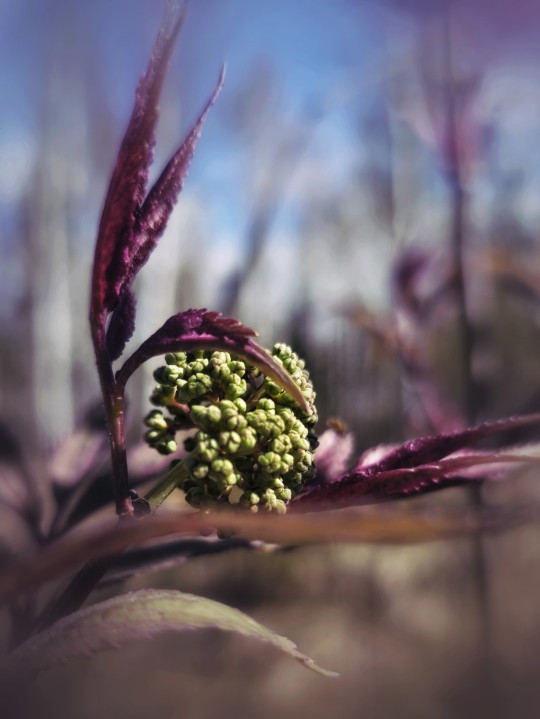

#elderberries#elderflower#elderberry#elder tree#black elderberry#photography#mine#nature#nature photography#original photographers#close up#macro
8 notes
·
View notes
Text
Elevate Immunity with Sambucol Vitamin C Gummies: Black Elderberry, Vitamin C, Zinc - 30 Gummies
Boost your immune system year-round with Sambucol Vitamin C Gummies. Packed with Black Elderberry, Vitamin C, and Zinc, these delicious gummies are the perfect addition to your wellness routine. Try them now and fortify your defenses!
0 notes
Text
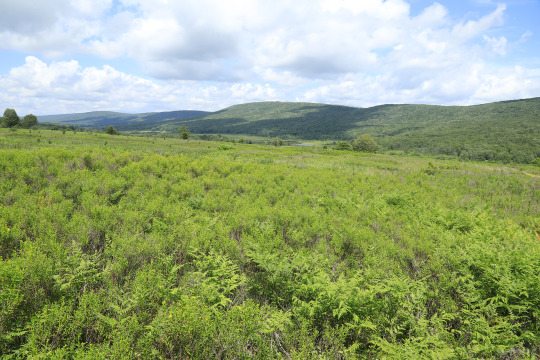
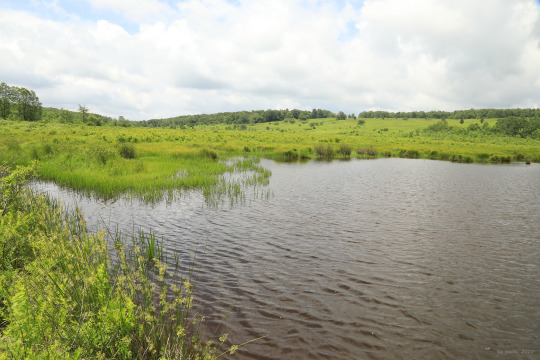


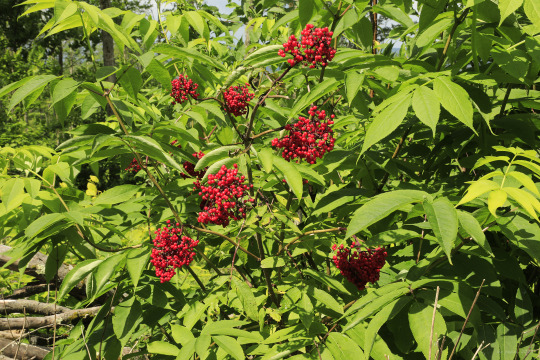
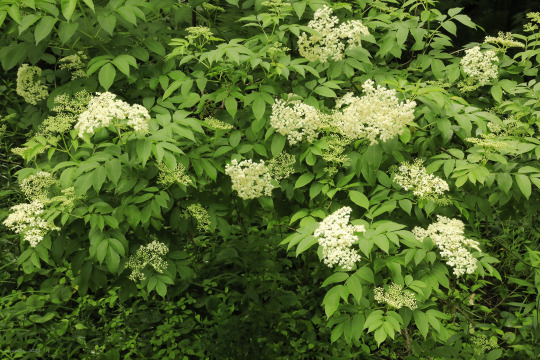


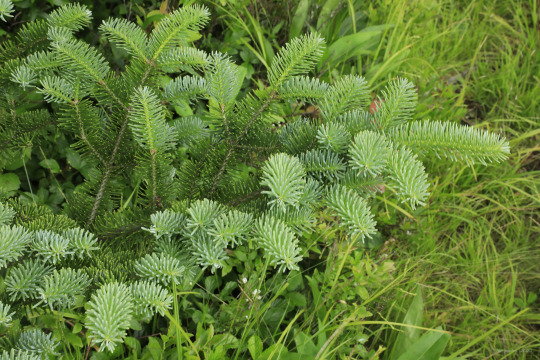


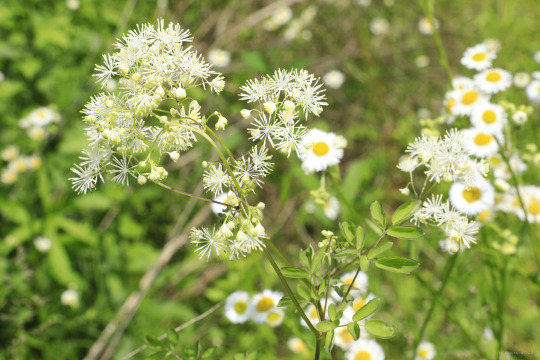

The northern end of Canaan Valley is characterized by regenerating northern hardwood forests interspersed with red spruce, open fields converting from pasture to heath, and beaver-curated wetlands. When the first white settlers arrived in the mid-1800's, the valley was a nearly impenetrable wilderness composed of mud-sucking "muskegs", gnarly rhododendron thickets, and monstrous stands of red spruce and eastern hemlock. Within 50 years, it was all gone, cut over and burned down down to bare rock. Salvation for this "Land of Canaan" has only recently come in the form of the Canaan Valley National Wildlife Refuge, which has set about the painstaking restoration of the valley's diverse (and occasionally threatened or endangered) plant and animal communities, some reaching their southernmost limits in these mountains.
From top: a view toward Cabin Mountain from Middle Ridge, whose open flank is overrun by lowbush blackberry, mountain laurel, bushy St. John's wort, bracken fern, and dotted hawthorn; several of the beaver-engineered wetlands, a mecca for birdwatchers from throughout the Mid-Atlantic region; the blazing red berries of red elderberry (Sambucus racemosa), a hugely important food source for local wildlife; the fanning white corymbs of American black elderberry (Sambucus canadensis), which comes into bloom about two months after red elderberry; quaking aspen (Populus tremuloides), whose delicate leaves flutter in unison at the slightest breeze; a beautiful young Canaan fir (Abies balsamea var phanerolepsis), a subspecies of balsam fir whose fragrant, blue foliage and high needle retention have made it increasingly popular as an ornamental; a lovely patch of hairy hedge nettle (Stachys hispida), a stately native mint; tall meadow rue (Thalictrum pubescens), a wetlands-loving perennial that clumps impressively along streambanks and bog margins; and lowbush blueberry (Vaccinium angustifolium), whose berries are just now starting to ripen.
#appalachia#vandalia#west virginia#wildflowers#flora#allegheny mountains#canaan valley national wildlife refuge#canaan valley#wetlands#beaver ponds#red elderberry#red-berried elder#american black elderberry#canada elderberry#quaking aspen#canaan fir#hairy hedge nettle#tall meadow rue#king of the meadow
73 notes
·
View notes
Text
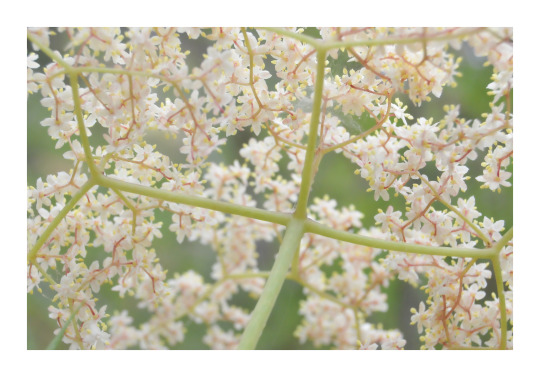
Untitled.
#photographers on tumblr#American black elderberry#Mexican elder#Sambucus nigra canadensis#Miller Canyon#Coronado National Forest#Cochise County#Arizona
71 notes
·
View notes
Text

Elderberry, Portland, OR
© Robert Pallesen
#Elderberry#Branches#Street Scene#PDX#Portland#Urban Landscape#Black and White Photography#Robert Pallesen
37 notes
·
View notes
Text


#black lace elderberry#elderberry#shrub#plant blog#plant photography#leach botanical garden#flowers#plants#plant#garden
17 notes
·
View notes
Text

Asparagus and Melon Salad with Smoked Almonds (Vegan)
#vegan#appetizer#salad#asparagus#honeydew melon#green peas#almonds#green onion#salad dressing#preserved lemon#lemon#mint#elderberry jelly#elderberries#mustard#olive oil#black pepper#sea salt#🤍#💚
3 notes
·
View notes
Text
Why Organic Elderberry Syrup is a Must-Have for Immune Support
Why Organic Elderberry Syrup is a Must-Have for Immune Support
Why Organic Elderberry Syrup is a Must-Have for Immune Support
Let’s get right to the point. Shall we? Elderberry has been scientifically proven to
support the activation of the immune system and prevent the replication of viruses, as well as being active against bacteria. Full stop. Do you need to read that again?
Elderberries have some pretty amazing benefits. It’s no wonder I always have a bottle of our organic Elderberry Syrup in the fridge for the first sign of sniffles or scratchy throat.
In addition to all the modern research, Elderberry has been used for centuries to treat upper respiratory infections and support health in the wintertime when we seem more susceptible to these bugs.
Here are the major takeaways about Elderberry (a plant in the sambucus family with
multiple genuses, including nigra) from study results published in scholarly journals on PubMed.
Proven to inhibit the infectious activity of viruses (PMID: 26645032)
In a study with influenza A & B symptoms were relieved on average 4 days earlier with Elderberry Syrup (PMID: 15080016)
Significant reduction of cold duration and severity (PMID: 27023596)
Shown to inhibit the viral replication and block the virus attachment of human
coronavirus NL63 (HCoV-NL63) (PMID: 31560964)
Water-derived elderberry extracts induce potent immune-modulatory effects, which represents the basis for a strong immune-mediated response to viruses including influenza compared to alcohol extracts that do not do this. (PMID: 35409309)
Stimulates immune response and prevents viral infection (PMID: 22972323)
Inhibits replication of influenza A, B, swine flu and turkey flu, significant
improvement of the symptoms within 2 days, complete cure in 2-3 days in 90%
compared to up to 6 days in the placebo (PMID: 9395631)
Most of the research focuses on viruses (influenza A, B, swine flu, common cold, and recently coronavirus), but there’s also examples of elderberry protecting against
bacterial infections. Active against human pathogenic bacteria (Gram-positive bacteria of Streptococcus pyogenes and group C and G Streptococci, and the Gram-negative bacterium Branhamella catarrhalisas) well as influenza viruses (PMID: 21352539)
Ok, so if you want to go down the scientific study of elderberry rabbit hole, click any of the links above and read on to your heart's content. Want to know more about the plant itself and some of its more magical qualities? Stay with me.
Black Elder (Sambucus nigra) is a shrub that can easily grow into a tree. It grows in
Europe and North America, tolerating many environments and enjoying full sun. Each spring it produces clusters of tiny cream colored flowers called elderflowers. These flowers can connect us to the realm of above and fairies, and they have a strong connection to children, representing purity and innocence. Elderflowers tend to be gentle, yet profound.
Then as the heat of summer arrives, the flowers wither and the berries ripen. Depending on the genus of the plant they range in color from a dusty light blue to a deep, dark purple.
The berries are typically dried and then extracted in water (sometimes glycerine or
alcohol), though as referenced above, water extraction is the superior method.
Anthocyanins in the elderberries turn the water a deep purple and these are the
compounds that stimulate and support our immune, respiratory systems and more.
Elderberries are not sweet on their own. They have an affinity for the root and heart
chakras, promoting a sense of being centered and open simultaneously. Which makes sense to me because when I am feeling vibrant and healthy I also feel centered and open, and elderberry helps bring us back to vibrant health.
I hope you learned something new reading this. Let me know if you have any questions about Elder.
#black elder#cure colds#elderberry syrup#fight bacteria#immune support#influenza A#influenza B#stimulates immune response#water derived elderberry extracts
4 notes
·
View notes
Text
baby mockingbird on my black elderberry
baby mockingbird on my black elderberry

baby mockingbird on my black elderberry!!!
#i am a normal and perfectly calm adult#animals#birds#native plants#American black elderberry#northern mockingbird#orinthology#botany#gardening#plants#nature#zoology#native species
4 notes
·
View notes
Text

Sambucus Nigra..
136 notes
·
View notes
Text
.
#well somehow I managed to get sick over break#my brothers gave me a horrific cold#so now I’m up in my grandma’s spare bedroom pouring elderberry tea down my throat#urrgghh everything hurts and I’m dying#but otherwise thanksgiving has been great#I stayed up till 1 am Wednesday making pumpkin pies#my brother and I watched the parade and because we’re both dancers we had a running commentary going on the dancing#played a lot of Dutch blitz#and tried to go to the bookstore on Black Friday to find the queen of Attolia but no luck
5 notes
·
View notes
Photo

2 notes
·
View notes
Text

TGH
Please don't remove credit
2 notes
·
View notes
Photo

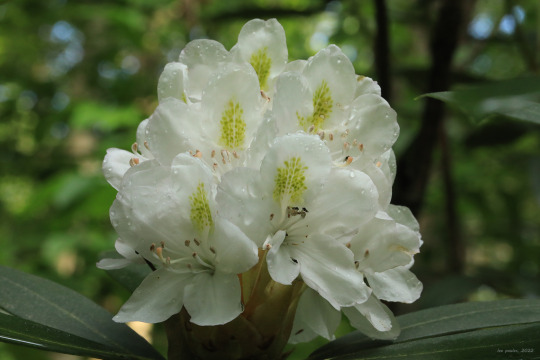
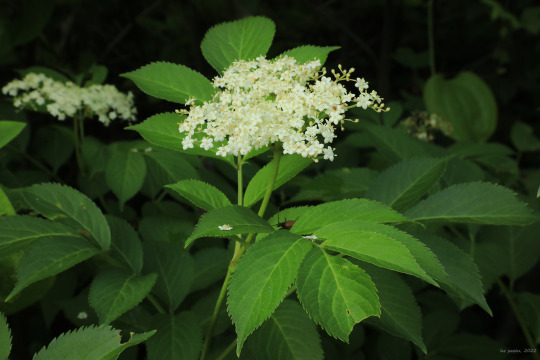

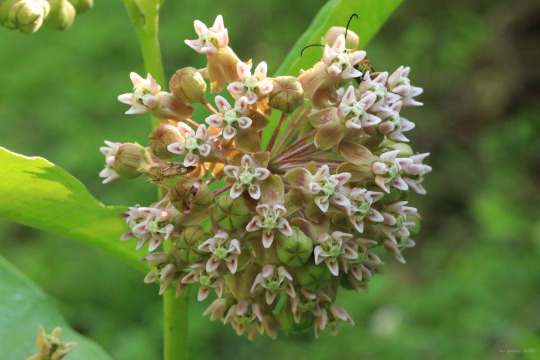





Above are a few photos from a late afternoon hike in the Cheat River Canyon, just after a line of heavy thunderstorms moved through the area. The storms were still brewing at the southern end of the canyon near Albright when I reached the overlook area. Great rhododendron (Rhododendron maximum) is starting to bloom in the canyon, but the real show is probably a week away. Milkweed is also coming on strong, with three varieties growing in the open fields and clearings around the canyon - poke milkweed (Asclepias exaltata), common milkweed (A. syriaca), and butterfly milkweed (A. tuberosa). I once heard milkweed described as a “mega-supermarket for insects”. It’s true. If you want a good starter course on the insects native to your region, then cozy up to the nearest milkweed plant in bloom with an insect field guide in hand.
From top: great rhododendron, also known as great laurel and rosebay rhododendron; American black elderberry, also known a American black elder (Sambucus canadensis), whose purple-blue berries will soon be used by locals to make wine, jam, jellies, and pies; common milkweed, which draws insects, including the banded longhorn beetle (Typocerus velutinus), in droves; butterfly milkweed, also known as butterfly weed; poke milkweed; eastern teaberry (Gaultheria procumbens), whose edible berries and leaves are used to flavor everything from tea to ice cream; and the adorable shinleaf (Pyrola elliptica), also known as waxflower, a shade-tolerant perennial of moist woods.
#appalachia#vandalia#west virginia#summer#flora#wildflowers#insects#cheat river canyon#cheat canyon#chestnut ridge#snake hill wildlife management area#rhododendron maximum#great rhododendron#great laurel#rosebay rhododendron#sambucus canadensis#american black elderberry#american black elder#asclepias syriaca#common milkweed#typocerus velutinus#banded longhorn beetle#asclepias tuberosa#butterfly milkweed#butterfly weed#asclepias exaltata#poke milkweed#gaultheria procumbens#eastern teaberry#pyrola elliptica
100 notes
·
View notes